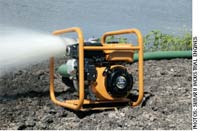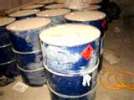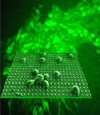Forklift engine tune-ups using carbon monoxide measurements reduce emissions and worker exposure.
Planners need to address the impact of these projects, which can expose workers and patients to airborne dust, bacteria, and mold spores.
AIHce 2009, taking place May 30-June 4 in Toronto, Canada, includes sessions and exhibitors across the IH spectrum. At least 11 sessions concern respiratory protection.
For a chemical manufacturer seeking to become a global supplier, keeping up with numerous foreign safety regulations and requirements can be quite a challenge. MSDgen®, a compliance tool from Carlsbad, Calif.-based 3E Co., was created to streamline one important aspect of this process, the creation and distribution of Material Safety Data Sheets (MSDSs).

From moving parts to flammable fluids,engines contain a number of materials that can harm a mechanic who’s not cautious. Some safety items may seem simple, but sometimes a little reminder can go a long way when the focus is on the job and safety measures are unintentionally neglected.
Laundry and dry laundry cleaning frequently use perchloroethylene or combustible solvent which are potentially dangerous to health. ISO 8230:2008, Safety requirements for dry-cleaning machines, will help manufacturers and designers to eliminate or reduce risk associated with these substances.

A proposal out for comments will allow for the enforcement of the European Regulation on the Classification, Labelling and Packaging of Substances and Mixtures, which adopts the internationally agreed Global Harmonized System on the classification and labeling of chemicals.
With a growing global awareness of the need for environmental protection and sustainability, organizations are eager to demonstrate their efforts to inventory, report, and reduce GHG emissions, ANSI said.

The proposed guidance would supersede the existing agency guidance on this subject contained in Pesticide Registration Notice 87-1 (PRN 87-1) published March 11, 1987.
A key feature of the meeting will be the opportunity to work with technical committees on industry standards, guidelines, and electronic data exchange protocols affecting the pump industry.
This four-hour event will cover major topics like SPCC plan basics, integrity testing, applicability, secondary containment, and recent rule revisions and will include a one-hour live question-and-answer session.
Clarkson University Center for Advanced Materials Processing Professor Igor Sokolov and graduate student Ravi M. Gaikwad have discovered a new method of protecting teeth from cavities by ultrafine polishing with silica nanoparticles.
As director of NIOSH from July 2002 to July 2008, Dr. John Howard's accomplishments were numerous, noted GCAC Chair John T. Steele in a letter to U.S. Secretary of Labor Designate Rep. Hilda Solis.
The agency's recent residual risk assessment found that after application of the MACT standards the chronic cancer risks are below 1-in-1 million, and no further cancer risk reduction is required. The analysis also found that non-cancer and acute risks to humans, as well as ecological risks from these facilities are low and that no further controls are warranted.
Lisa P. Jackson, CHMM, is the former commissioner of the New Jersey Department of Environmental Protection and before that worked for 16 years in EPA's Superfund Program, developing key hazardous waste cleanup regulations, overseeing hazardous waste cleanup programs and directing multimillion-dollar cleanup operations.
NIOSH has engaged The National Academies' Institute of Medicine to review the draft NIOSH Current Intelligence Bulletin: "Asbestos Fibers and other Elongated Mineral Particles: State of the Science and Roadmap for Research."
With the new technology, leaks are displayed on a video screen similar to the way night vision goggles are used to show the heat signature of objects.
Based on proposed amendments, if a refinery relies upon flaring more than expected, the facility would be required to take corrective action.

A new report from the National Research Council finds serious weaknesses in the government's plan for research on the potential health and environmental risks posed by nanomaterials, which are increasingly being used in consumer goods and industry.
After a follow-up inspection, OSHA issued the company seven failure to abate notices carrying $168,000 in proposed fines and then further issued the company one serious citation with a $1,500 fine for not medically evaluating employees' fitness to wear respirators.